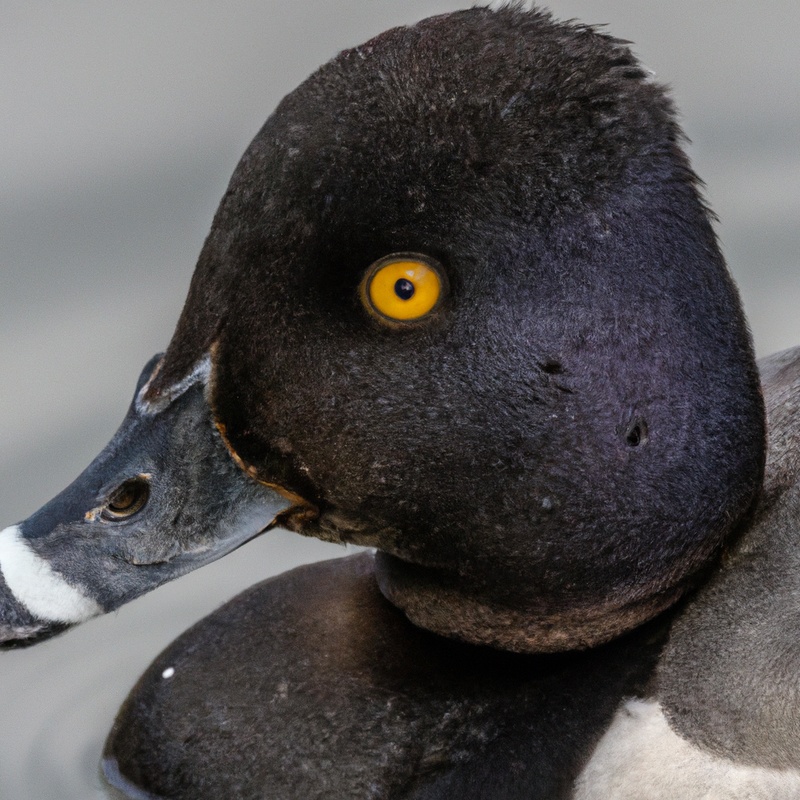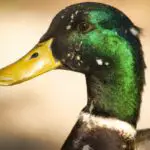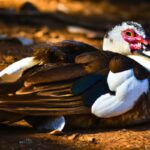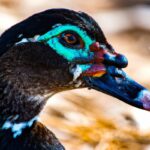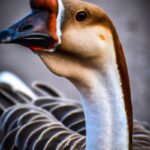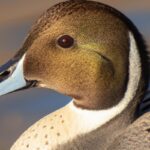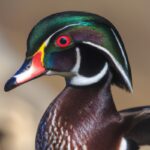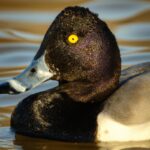Key Takeaways:
- Hunting Ring-necked ducks in Colorado requires a valid hunting license and adherence to state regulations.
- Ring-necked ducks are a popular game bird species in Colorado due to their abundance and desirable qualities for consumption.
- Hunters targeting Ring-necked ducks should focus on wetland habitats, particularly during their migration periods.
- Conservation efforts are crucial to maintaining healthy populations of Ring-necked ducks for sustainable hunting opportunities in Colorado.
Are you ready to embark on an exhilarating adventure in the beautiful state of Colorado? If you’re an avid hunter, I’ve got just the thrill for you – hunting Ring-necked ducks! These stunning waterfowl, with their distinctive plumage and fascinating behavior, are a favorite among hunters seeking an exciting challenge.
In this article, I’ll be your guide through the ins and outs of hunting Ring-necked ducks in Colorado.
From understanding their characteristics and habitats to navigating hunting regulations and techniques, I’ll equip you with all the knowledge you need for a successful and fulfilling hunting experience. So, grab your gear and let’s dive into the world of Ring-necked duck hunting!
Ring-necked Duck | |
Scientific Name | Aythya collaris |
Habitat | Freshwater lakes, ponds, marshes |
Range | North America, including Colorado |
Migration | Primarily migratory, winters in southern U.S. |
Season | Fall and winter |
Bag Limit | 6 ducks per day |
License | Colorado Small Game License |
Regulations | Follow Colorado Parks and Wildlife regulations |
About Ring-necked Ducks
Overview of Ring-necked Ducks
Ring-necked ducks, also known as ringbills, are small diving ducks that can be found in North America.
They are named after the distinctive chestnut-colored ring that encircles their necks.
These ducks have a dark grey body with a black head and a white patch near the bill.
They prefer freshwater habitats such as lakes, ponds, and marshes.
Ring-necked ducks feed on aquatic plants, seeds, and invertebrates.
They are migratory birds, with some populations traveling long distances to their breeding grounds in the northern United States and Canada.
These ducks are also popular among hunters due to their delicious meat and the challenge they present during hunting season.
Physical Characteristics of Ring-necked Ducks
Ring-necked ducks, also known as Aythya collaris, have distinct physical characteristics.
They are medium-sized diving ducks with a plump body and a rounded head.
Their most striking characteristic is the white ring around their neck, which is often difficult to see unless they are at close range.
Ring-necked ducks have a dark back and sides, and their breast and belly are black.
Males have a glossy dark head with a purple sheen, while females have a brown head with a lighter eyering.
They also have yellow eyes and a pointy tail.
These ducks have webbed feet adapted for swimming and diving, and their bills are dark and short.
Overall, their physical characteristics make them easily distinguishable among other duck species.

Distribution and Habitat of Ring-necked Ducks
Ring-necked ducks are primarily found in North America, particularly in Canada and the United States.
During the breeding season, they can be found in the northern parts of these countries.
However, they migrate to more southern regions during the winter months.
These ducks prefer freshwater habitats such as lakes, marshes, and ponds.
They are known for their diving ability and can often be found submerging themselves to feed on aquatic plants, seeds, insects, and small invertebrates.
Additionally, they require areas with abundant vegetation for nesting and raising their young.
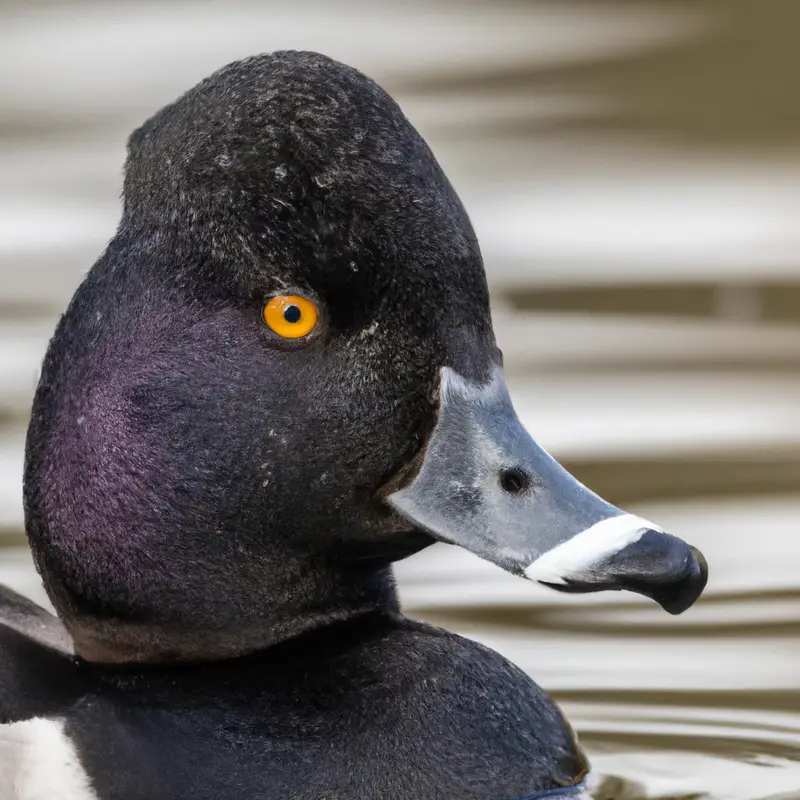
Behavior and Migration Patterns of Ring-necked Ducks
Ring-necked ducks are known for their interesting behavior and unique migration patterns.
These ducks are diving ducks, which means they can swim underwater for short periods, using their strong wings to propel themselves.
They often feed on aquatic vegetation, insects, and small fish.
When it comes to migration, Ring-necked ducks are known to undertake long journeys.
They breed in the northern regions of North America and then migrate south for the winter.
Some of them travel as far as Mexico and Central America, while others may stay in the southern United States.
During migration, Ring-necked ducks form large flocks and fly in V-shaped formations.
This helps to conserve energy and allows them to navigate more efficiently.
They are also known for their distinct whistling or squealing calls, which can often be heard as they fly overhead.
Hunting Regulations for Ring-necked Ducks in Colorado
Understanding Hunting Seasons and Bag Limits
Understanding hunting seasons and bag limits is important for every hunter.
Hunting seasons are set by wildlife management agencies to regulate the times when specific game species can be hunted.
These seasons are in place to protect animal populations and ensure sustainable hunting practices.
Bag limits, on the other hand, refer to the maximum number of animals that can be legally harvested during a hunting season.
These limits are designed to prevent overharvesting and promote conservation efforts.
It’s crucial for hunters to familiarize themselves with the hunting seasons and bag limits in their area to stay compliant with regulations.
Licensing and Permit Requirements for Hunting Ring-necked Ducks in Colorado
To hunt Ring-necked ducks in Colorado, you will need a valid Colorado small game hunting license.
Additionally, a Federal Migratory Bird Hunting and Conservation Stamp (duck stamp) is required for all hunters 16 years of age or older.
It’s important to note that hunting seasons and bag limits for Ring-necked ducks are set annually by the Colorado Parks and Wildlife Commission, so be sure to check the current regulations before heading out.
Remember to comply with all state and federal laws regarding hunting and migratory bird conservation.
Happy hunting!
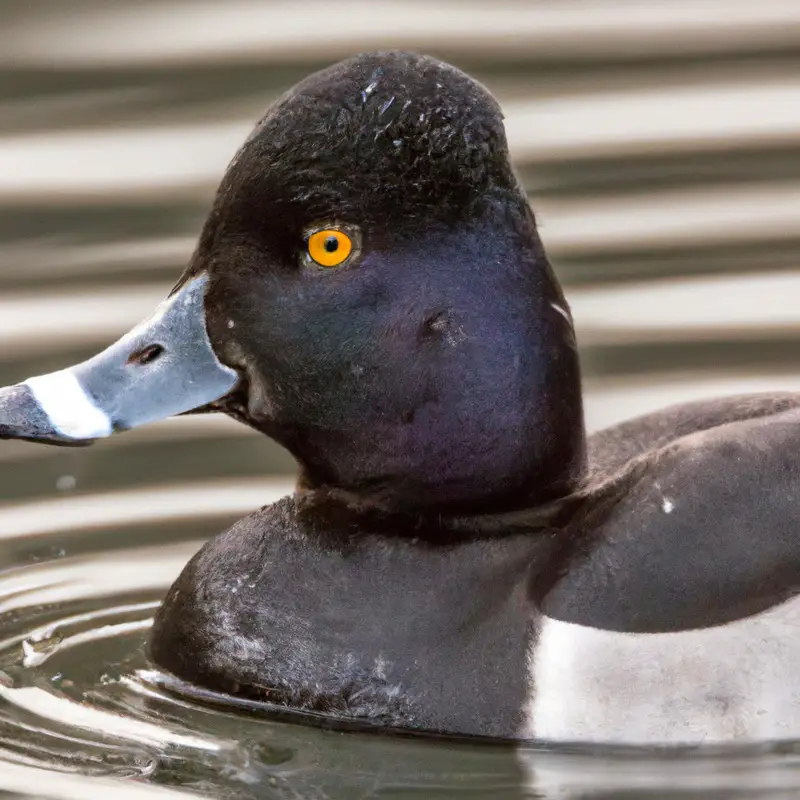
Important Considerations for Hunting Ring-necked Ducks in Colorado
When hunting Ring-necked Ducks in Colorado, there are a few important considerations to keep in mind.
- Licensing: Make sure you have the appropriate hunting license and any required stamps or permits for waterfowl hunting in Colorado.
- Season and Bag Limits: Familiarize yourself with the specific hunting season dates and bag limits for Ring-necked Ducks in Colorado. These regulations can vary year to year, so always check for the current information.
- Waterfowl Identification: Be able to accurately identify Ring-necked Ducks and other waterfowl species to avoid any accidental violations of hunting regulations.
- Ethical hunting practices: Follow ethical hunting practices by taking only ethical shots, avoiding excessive hunting pressure on the same area, and respecting other hunters and wildlife.
- Safety: Prioritize safety by wearing appropriate hunting gear, following firearm safety rules, and always being aware of your surroundings.
Remember, it is important to always stay updated with the latest hunting regulations and guidelines to ensure a safe and responsible hunting experience in Colorado.
Tips and Techniques for Hunting Ring-necked Ducks in Colorado
Locating Ring-necked Ducks’ Habitats
To locate Ring-necked ducks’ habitats, you should look for shallow freshwater bodies with vegetation.
These ducks prefer wetlands, lakes, ponds, and marshes.
Pay attention to areas with cattails, bulrushes, and other aquatic plants, as these provide food and cover for the ducks.
Additionally, keep an eye out for open water areas surrounded by marshy vegetation.
These ducks are known for diving, so areas with deeper water nearby would also be ideal.
Happy hunting!
Choosing the Right Equipment for Hunting Ring-necked Ducks
Choosing the right equipment is key for a successful hunt. Here are some essential items you’ll need when hunting Ring-necked ducks in Colorado:
- Shotgun: Opt for a 12 or 20-gauge shotgun with a modified or full choke. This will give you the range and control needed for effective shooting.
- Ammunition: Use steel or non-toxic shot shells in sizes ranging from #2 to #4. These shells are required by law to protect waterfowl populations and the environment.
- Decoys: Invest in a mix of hen and drake decoys to create a realistic spread. Place them strategically near your hunting spot to attract passing ducks.
- Calls: Learn to use a duck call to mimic the sounds of Ring-necked ducks. This can help lure them closer within shooting range.
- Camouflage: Blend in with your surroundings by wearing camouflage clothing, including a hat, jacket, pants, and waders if needed. It will help you stay concealed from the ducks.
- Binoculars: Spotting ducks from a distance can be challenging, so a good pair of binoculars will help you locate where they’re congregating.
Remember, choosing the right equipment is essential, but it’s also important to know and follow all hunting regulations and safety guidelines. Happy hunting!
Camouflage and Concealment for Ring-necked Duck Hunting in Colorado
Camouflage and concealment play a vital role in successful ring-necked duck hunting in Colorado. By blending into your surroundings, you increase your chances of getting closer to the ducks without being detected.
Opt for camouflage clothing that matches the colors and patterns of the local vegetation and terrain.
Additionally, consider using natural elements like duck blinds or brush to hide yourself from the ducks’ keen eyesight. Remember, the key is to avoid standing out and staying unnoticed, giving you the upper hand in your hunting endeavors.
Calling and Decoy Strategies for Ring-necked Duck Hunting
Calling and Decoy Strategies for Ring-necked Duck Hunting:
- Be sure to use a variety of duck calls, including both hen and drake calls, to create a realistic vocalization that can attract ring-necked ducks.
- Consider using a combination of decoys, including both floating and motion decoys, to create a visually appealing and natural-looking setup that will draw in the ducks.
- Pay attention to the wind direction and set up your decoys accordingly, as ring-necked ducks prefer to land into the wind.
- Experiment with different calling sequences, mimicking the sound of feeding or greeting calls, to entice the ducks to come closer.
- Avoid overcalling, as this can make the ducks wary and hesitant to approach your hunting location.
- Keep your decoy spread realistic by spacing them out and creating a natural-looking pattern.
- Incorporate some movement in your decoy spread using jerk cords or motorized decoys to simulate ducks actively swimming and feeding.
Remember, having a well-executed calling and decoy strategy can significantly increase your chances of a successful ring-necked duck hunt.
Processing and Cooking Ring-necked Ducks
Field Dressing and Cleaning Ring-necked Ducks
Field dressing and cleaning ring-necked ducks is an important step in preparing them for cooking.
Begin by plucking the feathers from the duck’s body, being careful to remove all the feathers.
Next, remove the head and wings with a sharp knife.
Make a small incision near the base of the breast and carefully remove the entrails.
Rinse the duck thoroughly with water and pat dry.
Your ring-necked duck is now ready to be cooked to perfection!
Popular Recipes for Cooking Ring-necked Ducks
There are many popular recipes for cooking Ring-necked Ducks.
One common method is to roast the duck with herbs and spices, creating a flavorful and tender dish.
You can also marinate the duck and then grill it for a smoky and delicious flavor.
Another option is to slow cook the duck in a stew or soup, allowing the flavors to meld together.
Lastly, you can pan-fry the duck breasts for a quick and easy meal.
The possibilities are endless, so feel free to get creative with your cooking!
Storage and Freezing Tips for Ring-necked Ducks
To store and freeze ring-necked ducks, start by cleaning and dressing the ducks as soon as possible after hunting. Remove feathers, guts, and any noticeable shot damage.
Rinse the duck thoroughly with cold water and pat dry.
Place the cleaned duck in a freezer bag or airtight container, ensuring it is sealed tightly to prevent freezer burn. Label the bag or container with the date.
If you prefer to freeze individual portions, consider dividing the ducks into serving sizes before freezing.
When freezing, try to use the ducks within six months for the best flavor and quality. Remember to thaw the frozen ducks in the refrigerator before cooking.
Frequently Asked Questions about Hunting Ring-necked Ducks in Colorado
Can non-residents hunt Ring-necked ducks in Colorado?
Yes, non-residents can hunt Ring-necked ducks in Colorado.
However, they need to obtain a valid hunting license and follow all the regulations set by the Colorado Parks and Wildlife department.
It’s important to check the specific hunting seasons, bag limits, and any additional restrictions before heading out.
Additionally, non-residents should familiarize themselves with the requirements for waterfowl identification and any necessary stamps or permits.
Make sure to read the latest regulations and consult the Colorado Parks and Wildlife website for more information.
Remember to always hunt responsibly and ethically!
Are there any specific hunting areas for Ring-necked ducks in Colorado?
Yes, there are specific hunting areas for Ring-necked ducks in Colorado. One popular location is the Alamosa National Wildlife Refuge, which provides a suitable habitat for these ducks.
Another area to consider is the Monte Vista National Wildlife Refuge, where Ring-necked ducks can often be found during the hunting season.
Additionally, the San Luis Lakes State Wildlife Area is known to attract these ducks and is open to hunters. It’s important to check with local authorities and obtain the necessary permits before hunting in these areas.
What is the best time of year to hunt Ring-necked ducks in Colorado?
The best time of year to hunt Ring-necked ducks in Colorado is during the migration season. These ducks typically migrate through Colorado in the fall and spring.
Fall migration occurs from September to December, while spring migration happens from February to April.
During these times, Ring-necked ducks can be found in various bodies of water, such as lakes, reservoirs, and marshes, making it optimal for hunting. It’s important to check local regulations and obtain proper licenses before engaging in any hunting activities.
What are some safety tips to keep in mind while hunting Ring-necked ducks in Colorado?
When hunting Ring-necked ducks in Colorado, it’s important to prioritize safety.
Here are some key tips to keep in mind:
- Wear appropriate safety gear, including a brightly colored hat or vest, to ensure you’re visible to other hunters.
- Practice muzzle control and always keep your firearm pointed in a safe direction.
- Identify your target before shooting, making sure it’s a legal and safe species.
- Be aware of your surroundings and know the location of other hunters in the area.
- Follow all state and local hunting regulations, including obtaining the necessary licenses and permits.
Can I use a motorized boat while hunting Ring-necked ducks in Colorado?
Yes, you can use a motorized boat while hunting Ring-necked ducks in Colorado.
The use of motorized boats is allowed for waterfowl hunting in Colorado, including hunting Ring-necked ducks.
However, it’s important to follow the state’s regulations and obtain the necessary licenses and permits.
Make sure to familiarize yourself with the specific rules and restrictions regarding boat usage, such as speed limits, boat capacities, and designated hunting areas.
Always prioritize safety and respect for the environment while enjoying your hunting experience.
Final Verdict
Hunting Ring-necked ducks in Colorado is a thrilling and rewarding experience for any waterfowl enthusiast. By understanding the hunting regulations and obtaining the necessary licenses and permits, hunters can enjoy a successful and enjoyable hunting season.
By following tips and techniques for locating habitats, selecting the right equipment, and employing camouflage and decoy strategies, hunters can increase their chances of a successful hunt.
Additionally, proper field dressing and cleaning techniques, as well as delicious recipes and storage tips, ensure that the harvested ducks are enjoyed to their fullest potential. With safety precautions in mind, hunters can navigate the hunting areas with confidence and excitement.
Colorado provides a beautiful and diverse setting for hunting Ring-necked ducks, making it an ideal destination for hunting enthusiasts.
Happy hunting!
